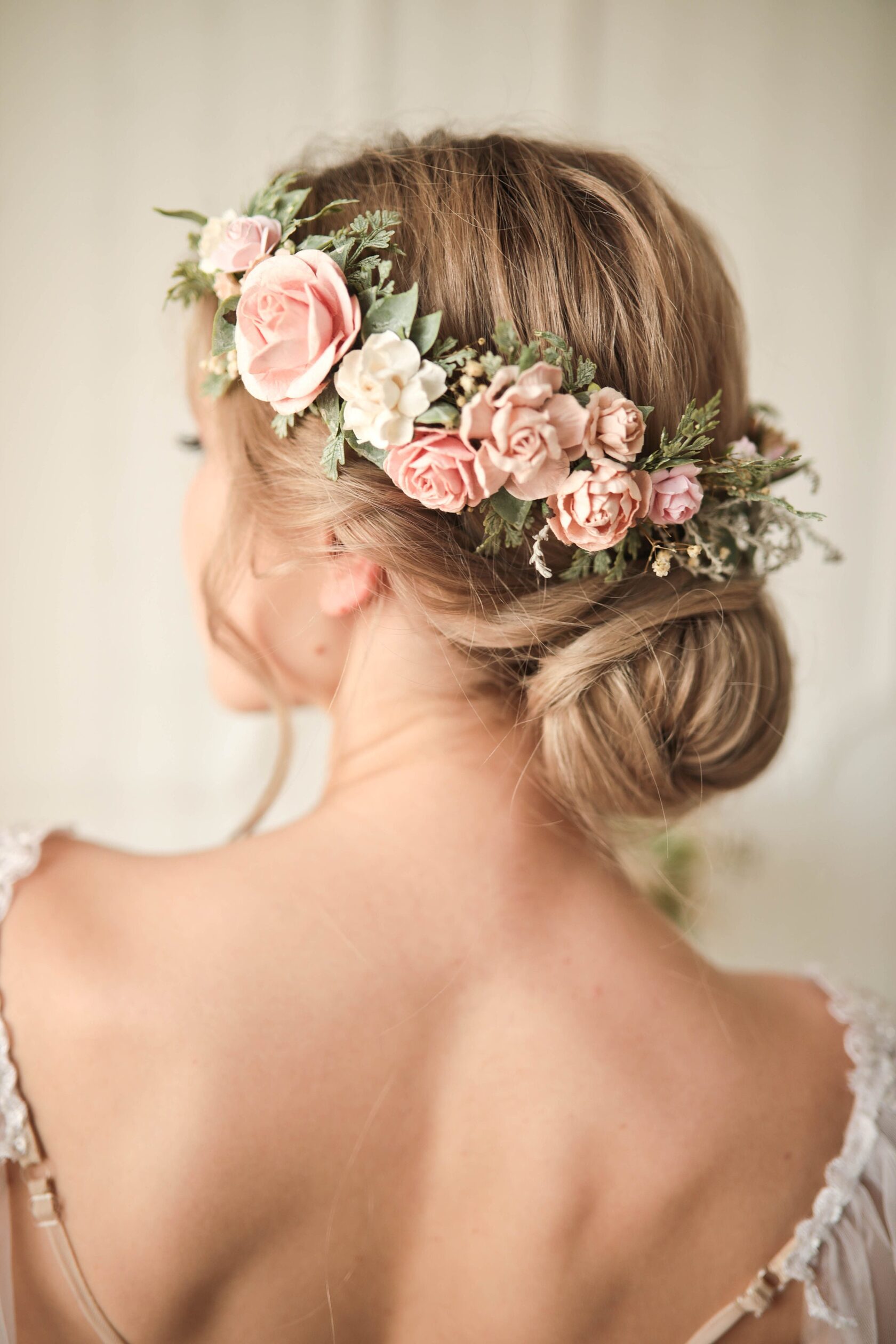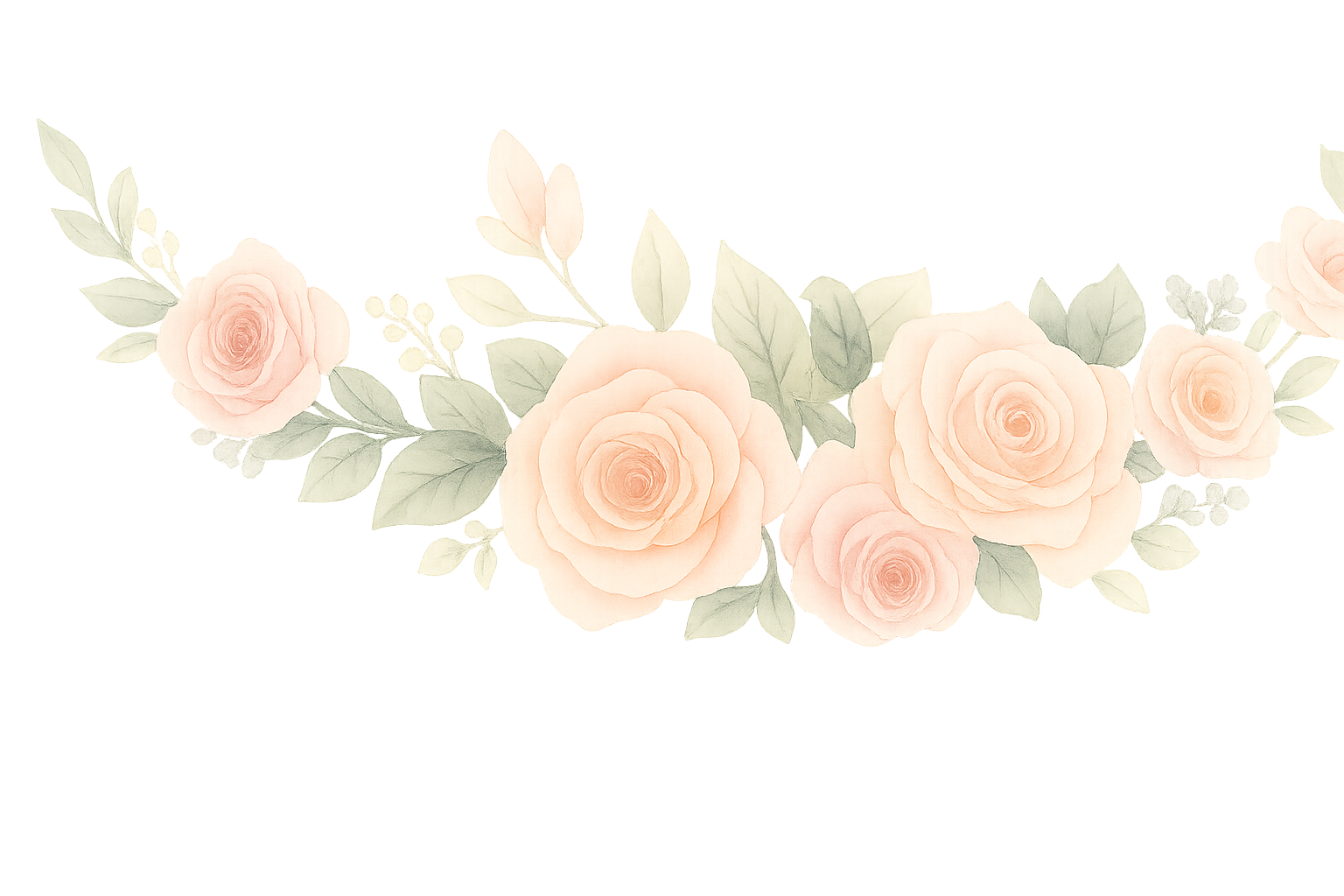The History of Flower Crowns: From Ancient Rituals to Modern Weddings
Flowers have always carried whispers of symbolism—purity, passion, renewal, devotion. But when flowers are gathered into a crown, their power multiplies. Woven together, they frame the face like living jewels, turning the wearer into both participant and icon in a timeless ritual. Across centuries and cultures, the flower crown has traveled from ancient ceremonies to festival grounds, from pagan rites to wedding aisles. Today, when a bride places a handmade flower crown upon her hair, she unknowingly joins a lineage that stretches thousands of years back into human history.
At FaberAccessories, each silk flower headpiece is crafted with this heritage in mind—an intimate echo of ancient traditions, designed for modern celebrations, yet infused with a timeless spirit.
Blossoms of Power: Ancient Beginnings
The earliest flower crowns were not worn for beauty alone but as sacred emblems. In Ancient Greece, laurel wreaths crowned victorious athletes, poets, and warriors. These garlands symbolized honor and eternal glory, linking human achievement to the divine. Roses and violets, dedicated to the gods, often adorned celebrants during rituals of love and fertility.
In Ancient Rome, floral wreaths played a central role in feasts and festivals. Citizens wore ivy and myrtle crowns during Saturnalia, while brides were adorned with veils and garlands that invoked prosperity and protection. These early crowns were not fleeting fashion—they were woven with intention, each plant chosen for its symbolism.
Wearing a flower crown then was not a mere decoration—it was a declaration, a visible bond between humanity and the mysteries of nature.
Maidens wove flower crowns for midsummer dances, each bloom reflecting the earth’s bounty at its height. To wear a handmade flower crown was to embody the living pulse of nature itself—vibrant, fertile, ever-renewing.
As Christianity spread across Europe, floral crowns adapted to new meanings. Virgins were often depicted in art with crowns of lilies or roses, symbolizing purity and divine grace. In marriage ceremonies, brides still wore flower wreaths, often combining herbs such as rosemary for remembrance and thyme for courage, mingling the sacred with the personal.
In this era, the floral crown began its transition into a distinctly bridal accessory. A handmade flower wreath was no longer only ritual—it became a symbol of innocence, fidelity, and hope for the future.
---
## The Romantic Revival of the Victorian Era
The Victorian age reawakened the language of flowers. Lovers exchanged blossoms with coded meanings, and weddings became floral spectacles. Brides frequently wore flower crowns of orange blossoms, representing fertility and eternal love. When Queen Victoria herself donned such a crown for her wedding to Prince Albert in 1840, she set a trend that swept across Europe.
In these years, the flower crown became inseparable from romance. It was no longer confined to rituals of fertility or religious devotion—it blossomed into a fashion statement that married emotion, elegance, and individuality.
---
## Bohemian Spirit: The Twentieth Century
The flower crown’s next great revival came in the countercultural movements of the 1960s and 1970s. Young people, rebelling against conformity and war, embraced the crown as a symbol of peace, freedom, and a return to nature. Handmade flower crowns of daisies and wildflowers were worn barefoot in meadows and music festivals, channeling a bohemian dream of simplicity and authenticity.
Though informal and unstructured, these crowns carried the same spirit as their ancient predecessors: they were markers of identity, expressions of belonging, and declarations of values.
---
## The Bride’s Crown Today: A Timeless Heirloom
In contemporary weddings, the flower crown has returned to its bridal roots—but with new interpretations. Today’s brides seek not only beauty but also meaning, individuality, and emotional resonance. A silk flower headpiece or handmade crown offers the softness of nature, the poetry of history, and the promise of endurance.
At FaberAccessories, Anna Faber shapes each bloom by hand, drawing inspiration from vintage styles and natural textures. Unlike fresh flowers, which fade, a silk flower headpiece endures—becoming not just a detail for the wedding day but a keepsake for anniversaries, photographs, and heirloom traditions. Each crown can be customized, ensuring no two pieces are alike—just as no two love stories are the same.
Whether a bride chooses a delicate bridal hair accessory woven with ivory roses or a bold wedding hair wreath of deep crimson peonies, she is participating in a story as old as humanity itself—wearing blossoms not only as adornment but as symbols of continuity, devotion, and beauty everlasting.
---
## Beyond the Bride: Modern Expressions
While still beloved in weddings, floral crowns and accessories have expanded into other realms of life. Photographers use them in maternity shoots, stylists incorporate them into children’s portraits, and mothers treasure them in family celebrations. Each piece, whether a floral ring pillow for a ceremony or a delicate silk boutonniere, carries the same artistry and meaning.
The versatility of these accessories lies in their ability to connect emotion and occasion. They are not simply fashion items—they are artifacts of memory, imbued with story.
-
Flowers have always carried whispers of symbolism—purity, passion, renewal, devotion. But when flowers are gathered into a crown, their power multiplies. Woven together, they frame the face like living jewels, turning the wearer into both participant and icon in a timeless ritual. Across centuries and cultures, the flower crown has traveled from ancient ceremonies to festival grounds, from pagan rites to wedding aisles. Today, when a bride places a handmade flower crown upon her hair, she unknowingly joins a lineage that stretches thousands of years back into human history.
At FaberAccessories, each silk flower headpiece is crafted with this heritage in mind—an intimate echo of ancient traditions, designed for modern celebrations, yet infused with a timeless spirit.
Blossoms of Power: Ancient Beginnings
The earliest flower crowns were not worn for beauty alone but as sacred emblems. In Ancient Greece, laurel wreaths crowned victorious athletes, poets, and warriors. These garlands symbolized honor and eternal glory, linking human achievement to the divine. Roses and violets, dedicated to the gods, often adorned celebrants during rituals of love and fertility.
In Ancient Rome, floral wreaths played a central role in feasts and festivals. Citizens wore ivy and myrtle crowns during Saturnalia, while brides were adorned with veils and garlands that invoked prosperity and protection. These early crowns were not fleeting fashion—they were woven with intention, each plant chosen for its symbolism.
Wearing a flower crown then was not a mere decoration—it was a declaration, a visible bond between humanity and the mysteries of nature.
Maidens wove flower crowns for midsummer dances, each bloom reflecting the earth’s bounty at its height. To wear a handmade flower crown was to embody the living pulse of nature itself—vibrant, fertile, ever-renewing.
As Christianity spread across Europe, floral crowns adapted to new meanings. Virgins were often depicted in art with crowns of lilies or roses, symbolizing purity and divine grace. In marriage ceremonies, brides still wore flower wreaths, often combining herbs such as rosemary for remembrance and thyme for courage, mingling the sacred with the personal.
In this era, the floral crown began its transition into a distinctly bridal accessory. A handmade flower wreath was no longer only ritual—it became a symbol of innocence, fidelity, and hope for the future.
---
## The Romantic Revival of the Victorian Era
The Victorian age reawakened the language of flowers. Lovers exchanged blossoms with coded meanings, and weddings became floral spectacles. Brides frequently wore flower crowns of orange blossoms, representing fertility and eternal love. When Queen Victoria herself donned such a crown for her wedding to Prince Albert in 1840, she set a trend that swept across Europe.
In these years, the flower crown became inseparable from romance. It was no longer confined to rituals of fertility or religious devotion—it blossomed into a fashion statement that married emotion, elegance, and individuality.
---
## Bohemian Spirit: The Twentieth Century
The flower crown’s next great revival came in the countercultural movements of the 1960s and 1970s. Young people, rebelling against conformity and war, embraced the crown as a symbol of peace, freedom, and a return to nature. Handmade flower crowns of daisies and wildflowers were worn barefoot in meadows and music festivals, channeling a bohemian dream of simplicity and authenticity.
Though informal and unstructured, these crowns carried the same spirit as their ancient predecessors: they were markers of identity, expressions of belonging, and declarations of values.
---
## The Bride’s Crown Today: A Timeless Heirloom
In contemporary weddings, the flower crown has returned to its bridal roots—but with new interpretations. Today’s brides seek not only beauty but also meaning, individuality, and emotional resonance. A silk flower headpiece or handmade crown offers the softness of nature, the poetry of history, and the promise of endurance.
At FaberAccessories, Anna Faber shapes each bloom by hand, drawing inspiration from vintage styles and natural textures. Unlike fresh flowers, which fade, a silk flower headpiece endures—becoming not just a detail for the wedding day but a keepsake for anniversaries, photographs, and heirloom traditions. Each crown can be customized, ensuring no two pieces are alike—just as no two love stories are the same.
Whether a bride chooses a delicate bridal hair accessory woven with ivory roses or a bold wedding hair wreath of deep crimson peonies, she is participating in a story as old as humanity itself—wearing blossoms not only as adornment but as symbols of continuity, devotion, and beauty everlasting.
---
## Beyond the Bride: Modern Expressions
While still beloved in weddings, floral crowns and accessories have expanded into other realms of life. Photographers use them in maternity shoots, stylists incorporate them into children’s portraits, and mothers treasure them in family celebrations. Each piece, whether a floral ring pillow for a ceremony or a delicate silk boutonniere, carries the same artistry and meaning.
The versatility of these accessories lies in their ability to connect emotion and occasion. They are not simply fashion items—they are artifacts of memory, imbued with story.
-



